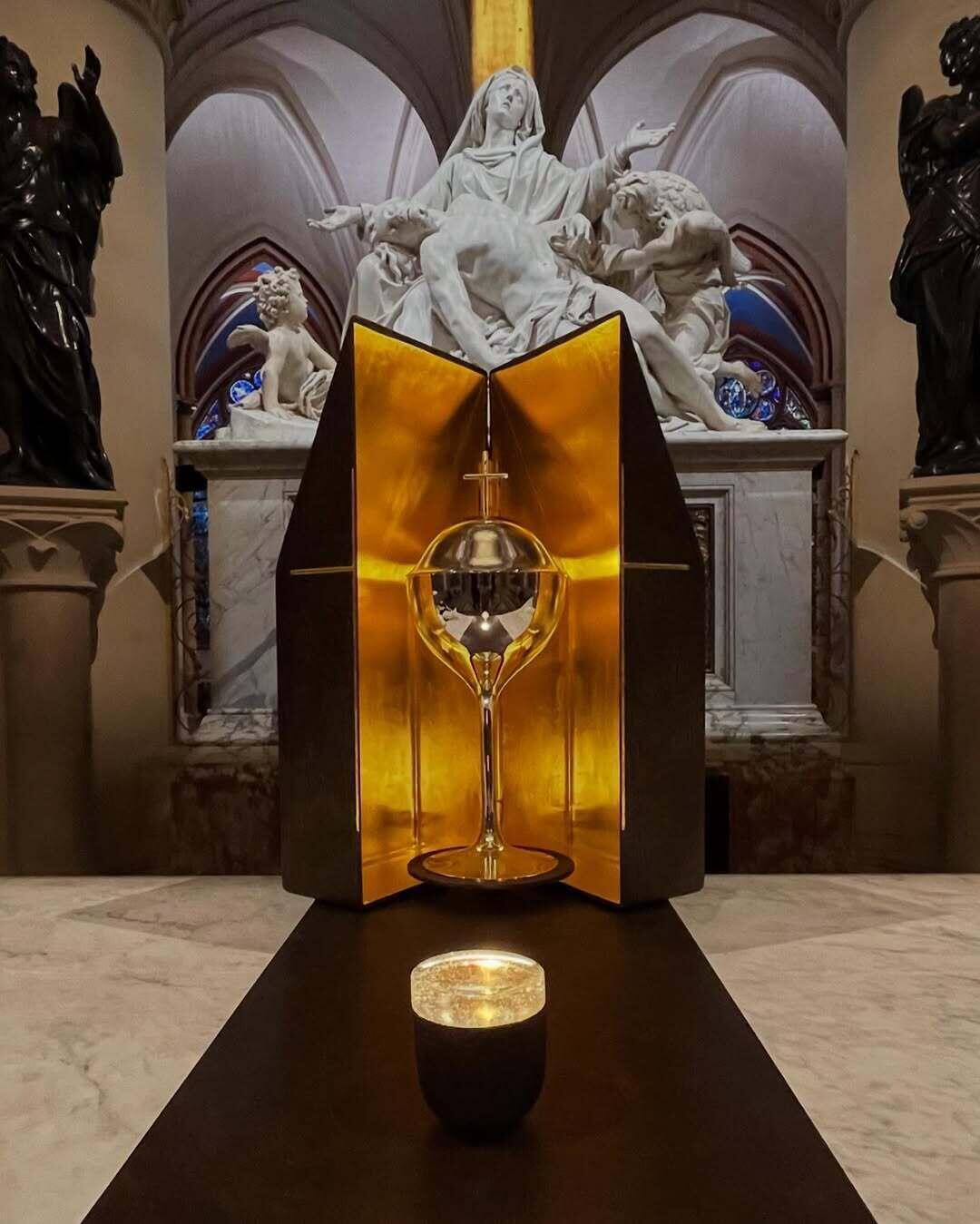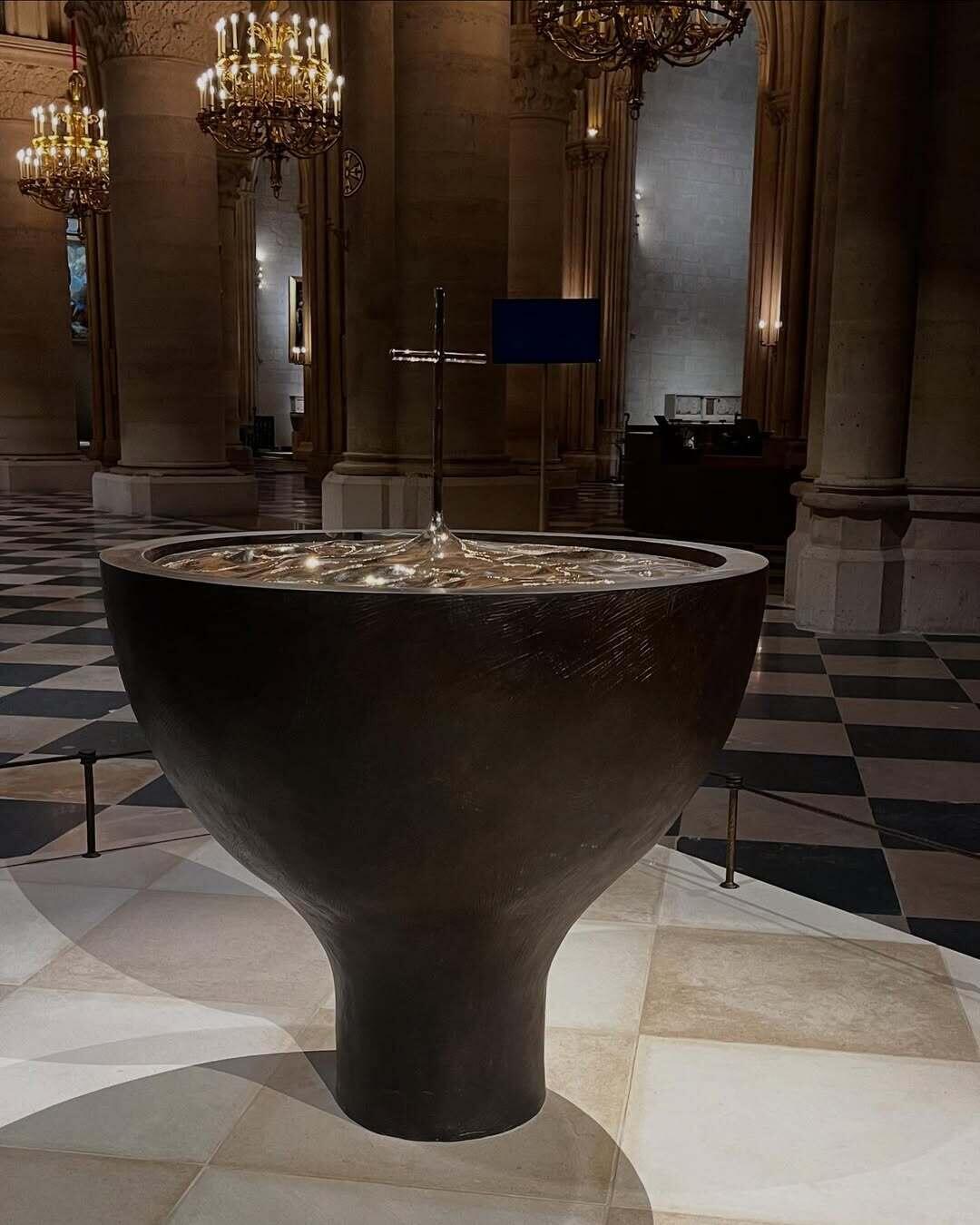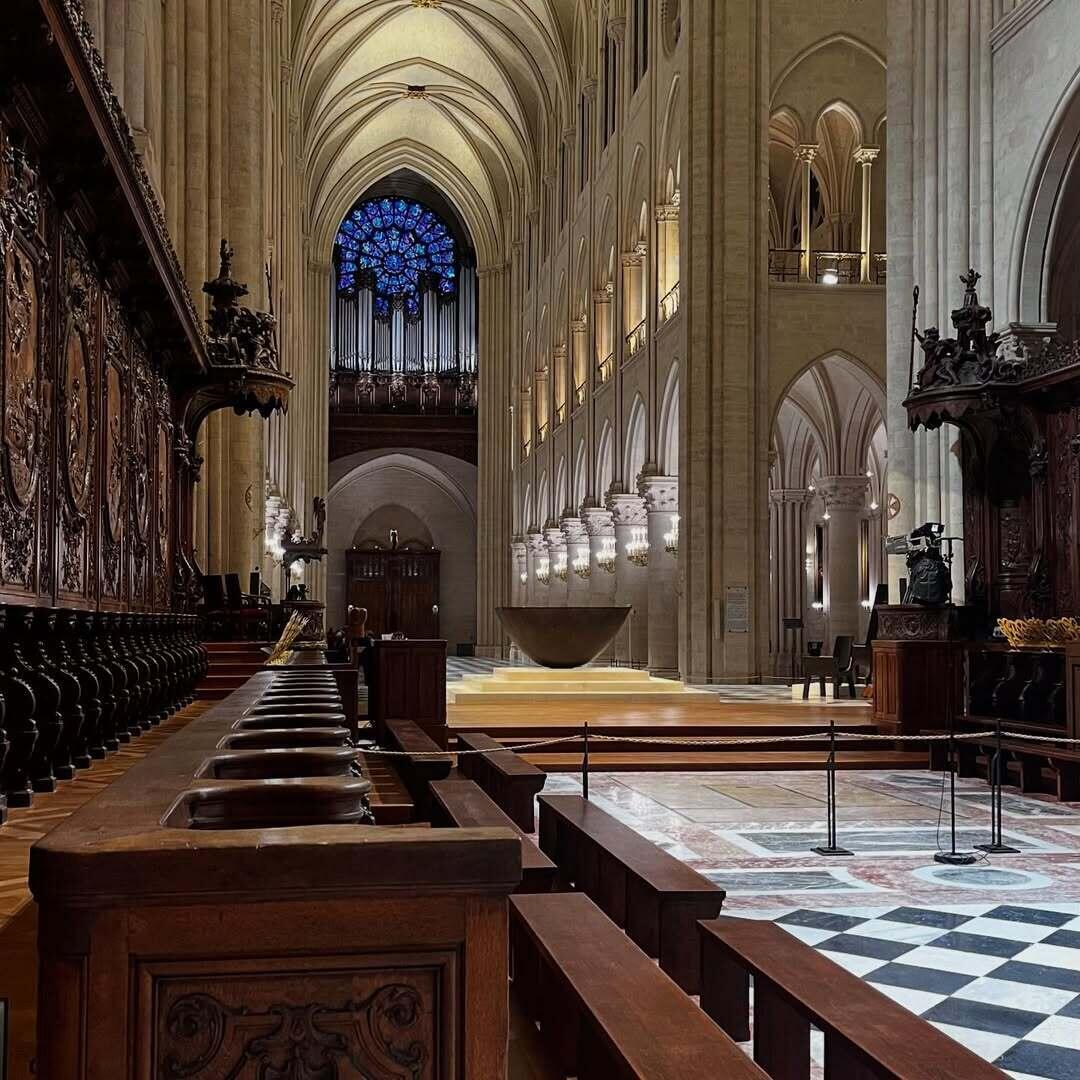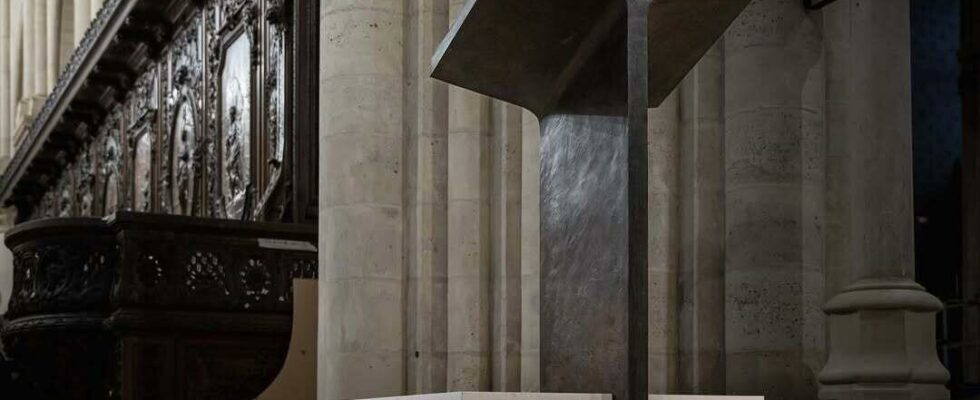100% creation invites you to meet the companions, craftsmen or designers who worked on the Notre-Dame de Paris construction site. Today: Guillaume Bardet, designer of the cathedral’s liturgical furniture. His recent order for liturgical furniture for Notre-Dame de Paris cathedral demonstrates his commitment to combining artisanal know-how and respect for history.
“ From the start, when we start this type of study, we are there to create, so we want to create ourselves »: Guillaume Bardet, designer and sculptor, speaks to RFI.
“ I feel like I don’t have much else. That’s all I do. I don’t feel like I’m working, but I work all the time. I’m always drawing something, thinking about a project, dreaming about a project. There’s a lot of fun in that. It’s really moments of pleasure, moments of drawing. I spend a lot of time in my studio. This is the place where I am happiest. I have my own little world. It can be a mess everywhere. I am in my workshop, I am very peaceful. »
Born in Rouen, Guillaume Bardet grew up in an environment conducive to creativity, encouraged by an artist mother. At 15, when he arrived in Paris, his passion for sculpture took a decisive turn. His academic background in Decorative Arts allows him to touch many disciplines, but it is in furniture design that he specializes, while cultivating his interest in sculpture. During his stay at the Villa Medici, he explored deep themes linked to sustainability and anchoring:
“ I arrive in Rome, at the Villa Medici. I see this place and I say to myself : “But it’s magical! For me, it’s simple, if I could come here, I would work on the passing of time, on sustainability, on stone.” I’m going to compete and I’m writing a text called “The immobile furniture”, where I propose totemic pieces in stone, between sculpture and design. We were in the middle of what was called nomadic furniture. We traveled around the world and the furniture was nomadic. All the objects had casters and I found that ridiculous, because just because we put casters doesn’t mean it’s nomadic. My idea was to say “the more we are going to be nomadic, the more we are going to move, the more we will need, on the contrary, very strong benchmarks”. The landmarks will be our family homes, places where we return and where we have memories, things that are there. I am going to make totemic objects, which cannot be removed, places to sit, to eat, to chat in pairs or, on the contrary, to be alone, which will be placed in gardens. And then, perhaps at some point, we will no longer like them, but as they are very heavy, we will not be able to take them off and our children will grow up with them and will love them. This is how these pieces will stay. They will tell and will carry history. The more we move, the more grounding we need. I therefore wrote this text of “Mobilier Immobile” and I was taken to the Villa Medici. »
Also readMural painting at Notre-Dame de Paris with Marie Parant-Andaloro
When he was selected to order liturgical furniture for Notre-Dame de Paris, Guillaume Bardet found himself faced with a monumental project. He is also confronted with the challenges and responsibilities linked to the functionality of these pieces and their interaction with the sacred space: “ It was a call for applications for the five main elements of liturgical furniture, in order of entry: the baptistery, the altar which is in alignment with the baptistery, in the axis, and then to the right of the The altar, the ambo, which is the place where the texts are read, to the left of the altar, there is the cathedra and the associated armchairs. The cathedra is the archbishop’s chair, but above all, if the cathedra is removed from the cathedral, the cathedral becomes a church again. It is the cathedra that makes the cathedral. When the bishop – but in Paris, it is the archbishop – sits on it, it is directly the presence of Christ in the Church. It’s something strong. And then, at the very back, there was the tabernacle, which for me was a very mysterious room.
The application form involves writing a text and then giving your book at the start, that’s it. I write a text that explains why I’m going there, why I naturally feel justified in going there. I want to participate in it. What would have been the hardest was to answer to win, but to have an answer that didn’t suit me. If I had won with an answer that didn’t suit me, I would have had this thing saying to myself “this is not me for the rest of my life”. Finally, all at once, I took off the pressure backpack and said to myself, “It doesn’t matter, this is going to be great. I’m going to have fun and I’m going to do an amazing project!” . »
Also readBertrand Cattiaux, organ builder and sound sculptor at Notre-Dame de Paris

With immutable materials like bronze, he created objects for Notre-Dame de Paris, including the baptistery which, until then, did not exist. Elements that will transcend time, while being anchored in the history of the cathedral:
“ I worked on these seven pieces as a family. These pieces had to speak and respond to each other. So very strongly, when we speak of the baptistery and the altar which are aligned : the baptistery, for example, did not exist before at Notre-Dame. It is the archbishop’s choice to say “we are going to put it at the entrance to Notre-Dame, but really at the entrance, in the central aisle”. When you return to Notre Dame, the first thing you will see is this baptistery which is aligned, and therefore in direct dialogue with the altar. My responses often came from coercion. The baptistery had the constraint of having to put a lid. And finally, I reversed this constraint by making the lid the central element. My lid is like a very soft water surface, small mirror-polished bronze water waves. The mirror-polished bronze becomes like gold, from which emerges in the middle of this cover, which is still one meter in diameter, the baptismal cross. »
Also readIonna Vautrin, the designer chosen for the chairs of Notre-Dame de Paris [3/9]

According to Guillaume Bardet, this project is a unique collaborative work:
“ Everything is out of the ordinary. Because I didn’t experience it all the time. But at the Foundry, which is 700 kilometers from Paris, there are around forty people working there. Everyone was super happy and super proud to work on the Notre-Dame pieces. We have all religions, nationalities and all non-religions, but Our Lady speaks to everyone, to all people, all ages, all social backgrounds. They were super happy and super proud. At each break they would see each other’s work, something very beautiful. Locally, everyone was very interested in this adventure. There were little pieces of Notre-Dame in the regions. Today, in the world we live in, in our society, it is a matter of harmony. There was no real debate around the renovation of Notre-Dame. There was so much know-how, so much love that was put into it. From time to time, humanity does some pretty good things. And this is real proof. It’s so beautiful everywhere ! »
Also readRégis Mathieu, a master luster maker at Notre-Dame de Paris [4/9]

Guillaume Bardet worked with craftsmen, but also with members of the diocese, thus sharing a sense of community that binds everyone to this extraordinary project:
“ I sculpt my pieces myself, but by sculpting them myself, these pieces have my presence everywhere, my hands, my tools, there is not a millimeter of the pieces that have not been handled by me . I filled them with humanity. These are pieces to touch, to caress because they have skin. Every millimeter of this skin is unique. I therefore sculpted all these pieces in July, August, September, October 2023. I live in a village called Dieulefit. Everyone arrived at Dieulefit, the archbishop of Paris came with the rector of Paris. I had three bishops in my workshop. It was important, they came to have a first physical meeting with this future furniture, and not a projection in the form of a model, not computer-generated images. No, no, a real meeting, and so, they came with chalices, ciboria (cups) for the liturgy, to test the right height. They came to the conclusion of telling me “Guillaume, it’s a little too high, we need to lower it by 5 cm”. On this, everything that is concrete, symbolic, I listen to you. On the other hand, if it’s right, I find it beautiful or not. Beauty is my job, it’s me who decides. We have always had a very open dialogue. On the contrary, I wanted them to explain it to me every time. It was a very beautiful, very simple dialogue. »
Find all the episodes of 100% Création on:
Apple Podcast Castbox Deezer Google Podcast Addict Podcast Spotifyor any other platform via the RSS feed.
Also readAlexandre Gougeon, a campanist at the service of Notre-Dame de Paris [2/9]
